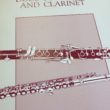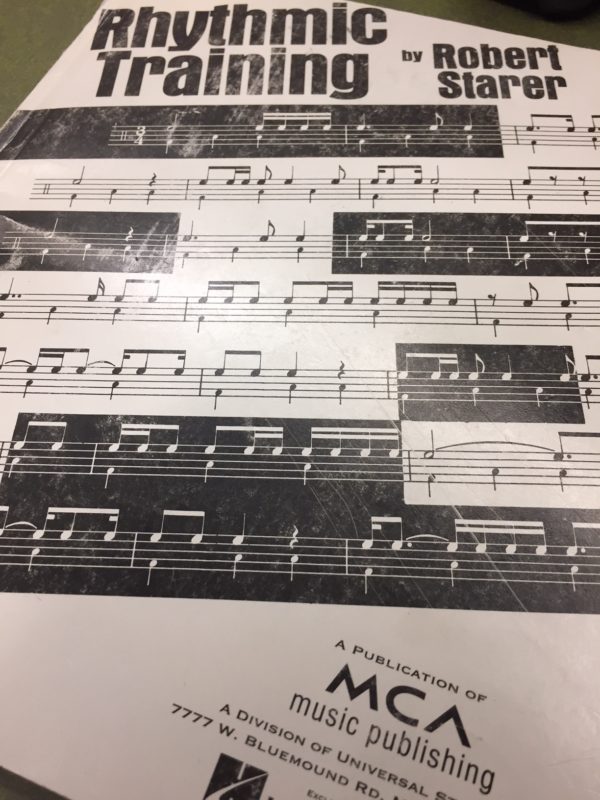For most musicians, performance anxiety is a fact of life. In my own experience, I have performed enough in my lifetime where it is no longer debilitating. It used to be a serious issue for me, and I’m sure I haven’t seen the last of it, either. For me, it was most helpful to perform as often as possible. The more experience I developed, the less nervous I became. It was also helpful to think about performance as my job. Somehow, framing the task in that light takes a lot of the pressure off.
So what else can we do as musicians about a situation that exists and must be faced? To prepare for a studio class last semester, I polled a group of colleagues about their approaches to managing performance anxiety. Their responses are below, and I’ve listed links to blogs at the end of this post for those who have them. (*Guys, if you want to be identified by name, please let me know.)
– A Hornist – Fearlessness in performing is a major topic for my teacher. Here’s his prescribed method: 1) Practice your tail off. Prepare fully. 2) When it’s time for the performance, just before you enter the stage (or audition room or whatever), read your inspiration sheet to yourself. The inspiration sheet is something that you write yourself, and it says whatever you need to hear right before you perform, whether it’s technical advice, motivational, or a combination. 3) Enter the performance space. Put the inspiration sheet on your stand. Quickly read it a second time. 4) Before you play each excerpt (or solo, or whatever), read your segues to yourself. Segues are bits of advice (3 per excerpt, or solo, or whatever) written on post-its attached to your music. Each post-it contains 3 pieces of advice: 2 technical things and 1 reminder of the story you plan to tell with your performance of this particular piece of music. I should also mention that the whole performance process (inspiration sheets, segues, and so forth) happens every time we perform around here, which is often. Besides actual auditions and concerts, we also use the process for performance class every morning (a class where we take turns playing the first few measures of excerpts and the emphasis is on the performance process) and at the beginning of every lesson (where we perform entire excerpts).
– A Woodwind Doubler – In my own life, it seems that performance anxiety has been related to issues outside of music, whether I realized it or not! I would encourage performers dealing with these problems to consult people that deal with all issues of wellness: spiritual, emotional, mental, and physical. Of course, I would second what the previous musician said about preparation being key. There is also the question of how much you have performed in a given scenario. Right now, I have a rough time performing on flute and oboe (with my own reeds). Saxophone and bassoon are no-brainers. How do I fix that roughness? Perform more!
– Another Woodwind Doubler – I like to visualize my way through an entire performance, including walking on stage, taking a bow, tuning, and so forth. And, I try to make the performance day a “good normal” day. I have my favorite normal breakfast, but don’t eat something out of the ordinary; wear clothes that I like, but not new clothes, and so forth.
– An Oboist – My little ritual is to eat a banana about an hour before every recital or audition. It’s probably just a placebo, but some say bananas contain a natural beta-blocker. I even have a picture of myself eating a banana in my wedding dress before the ceremony because I was nervous about forgetting my vows. In all seriousness, though, a professor used to tell me that musicians are giving their audience a gift at a performance and that the audience is just there to receive that from you. For me, this makes the audience seem a lot less threatening or judgmental in my mind. Another professor once told me that he will often pick one person in the audience to play for, like a cute little old lady in the back. He’d say, “She’s my date tonight. Even though she doesn’t know it yet, she’s my date.” I thought that was really sweet. A few years ago, because of those things I learned, I started approaching other people’s performances in this way (just going to enjoy and receive a gift). Not that I was ever critical or nasty before, but I think that once I really became that kind of audience member, I became a lot less afraid of my own audience.
– A Flutist – I definitely feel that preparedness and confidence are #1 and #2 on the anxiety annihilation list. When preparing for super stressful performances, I do a lot of visualization: just fingering through the pieces, eyes closed, picturing playing in front of an audience. My main anxiety comes as I’m walking on stage — not the day before, the hour before, the minute before, but right when I walk out. My best defense is acting confident. I feel as though I am “tricking” the audience into thinking I’m great, even before I play a note. That’s probably what has helped me the most. Well, and then there’s actually being confident.
– A Bassoonist – Exercise! Lower your cortisol levels by exercising to decrease the physical symptoms.
– A Singer – In my basic approach, I say expect to get nervous. Many of us try “not to get nervous,” then get nervous, and get mad that we are nervous. So now you’re nervous and mad at yourself! What we learn is not necessarily how to get less nervous, but to learn how to deal with the nerves when they come.
– A Guitarist – Practice and preparation of the music should always be at the top of the list. Learning how to cope with performance anxiety is just like every other aspect of our artistic development. We learn how to perform. I’m always telling my studio that learning how to manage a performance is just like working on your scales. Every performance situation is different but experience is key. It doesn’t matter if you are preparing for an audition, performance lab, a jury, a recording, a student recital or a major recital — just do it. Play. Perform. Do it often. Start small and go from there. Randomly pull a fellow student into a practice room and play for them, ask any faculty member if they have a moment to listen to you play one piece, play that same piece in seminar, play the same piece twice in seminar, record yourself and analyze the performance, play in church, play in a coffee house, find different venues, volunteer for as many student recitals as permissible. For example, I often encourage my guitar majors to put a 2-3 minute presentation together and offer to perform for the Spanish language classes. Just get out there! Try all of the other great suggestions until you find a coping method that works for you. And don’t forget to breathe.
– A Pianist – For me, body awareness has probably helped as much or more than anything with the actual stage fright. Just being a good observer of what’s going on with your body in the moment… then later, you can address specific issues, such as fingers locking up or not being able to breathe.
– Another Singer – I had a professor who had us practice getting nervous. We would do jumping jacks or jog in place to raise our heart rate. It was also harder to catch your breath and you might get a wee bit sweaty. It was a pretty pragmatic way of training yourself to function in spite of nerves as opposed to “getting over” them.
For more from some of these contributors:
http://www.bretpimentel.com
http://www.paulabrusky.com
http://www.musiccollective.org/stephanie-carlson-henke/
 Where to start when taking a look at a piece for the first time? Obviously there are as many approaches as there are musicians, and different pieces call for different attention. For an example, let’s take a look at the Duos for Flute and Clarinet by Robert Muczynski. (I’ll be performing this with my clarinetist colleague in October.)
Where to start when taking a look at a piece for the first time? Obviously there are as many approaches as there are musicians, and different pieces call for different attention. For an example, let’s take a look at the Duos for Flute and Clarinet by Robert Muczynski. (I’ll be performing this with my clarinetist colleague in October.)


